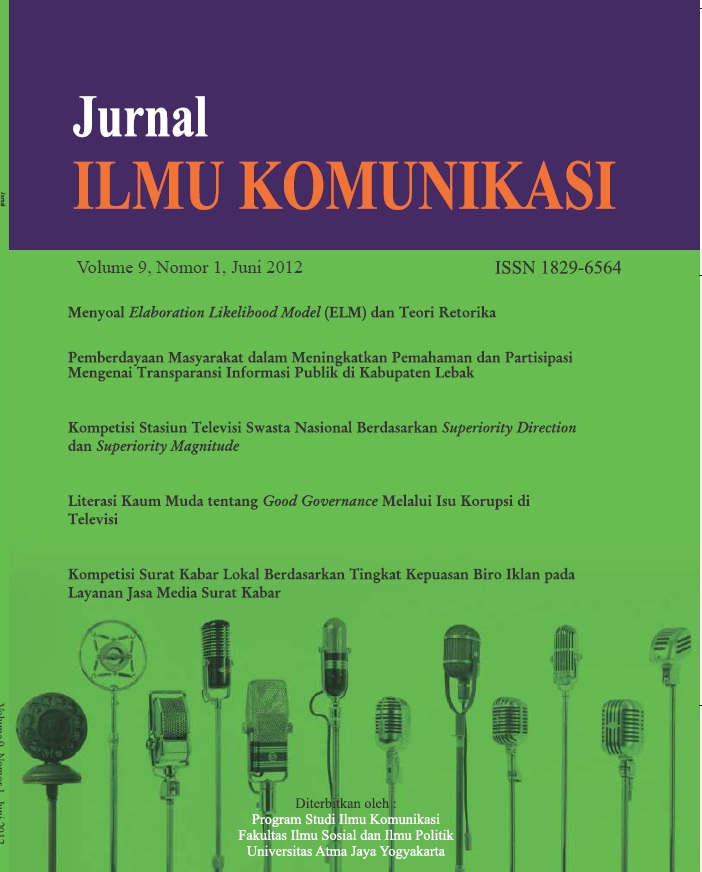Menyoal Elaboration Likelihood Model (ELM) dan Teori Retorika
DOI:
https://doi.org/10.24002/jik.v9i1.50Abstract
Abstract: Persuasion is a communication process to establish or change attitudes, which can be understood through theory of Rhetoric and theory of Elaboration Likelihood Model (ELM). This study elaborates these theories in a Public Lecture series which to persuade the students in choosing their concentration of study. The result shows that in term of persuasion effectiveness it is not quite relevant to separate the message and its source. The quality of source is determined by the quality of the message, and vice versa. Separating the two routes of the persuasion process as described in the ELM theory would not be relevant.Abstrak: Persuasi adalah proses komunikasi untuk membentuk atau mengubah sikap, yang dapat dipahami dengan teori Retorika dan teori Elaboration Likelihood Model (ELM). Penelitian ini mengelaborasi teori tersebut dalam Kuliah Umum sebagai sarana mempersuasi mahasiswa untuk memilih konsentrasi studi studi yang didasarkan pada proses pengolahan informasi. Menggunakan metode survey, didapatkan hasil yaitu tidaklah cukup relevan memisahkan pesan dan narasumber dalam melihat efektivitas persuasi. Keduanya menyatu yang berarti bahwa kualitas narasumber ditentukan oleh kualitas pesan yang disampaikannya, dan sebaliknya. Memisahkan proses persuasi dalam dua lajur seperti yang dijelaskan dalam ELM teori menjadi tidak relevan.
Downloads
Published
How to Cite
Issue
Section
License
Jurnal ILMU KOMUNIKASI is an academic journal. As such, it is dedicated to the open exchange of information. For this reason, JIK is freely available to individuals and institutions. Authors who publish in Jurnal ILMU KOMUNIKASI will release their articles under the Creative Commons Attribution (BY) License. This license allows anyone to copy and redistribute the article in any medium or format as well as remix, transform, and build upon the material for any purpose, even commercially as long as they credit the authors for the original creation. For details of the rights authors grants users of their work, see the "human-readable summary" of the license, with a link to the full license. (Note that "you" refers to a user, not an author, in the summary)
 This work is licensed under a Creative Commons Attribution 4.0 International License.
This work is licensed under a Creative Commons Attribution 4.0 International License.














